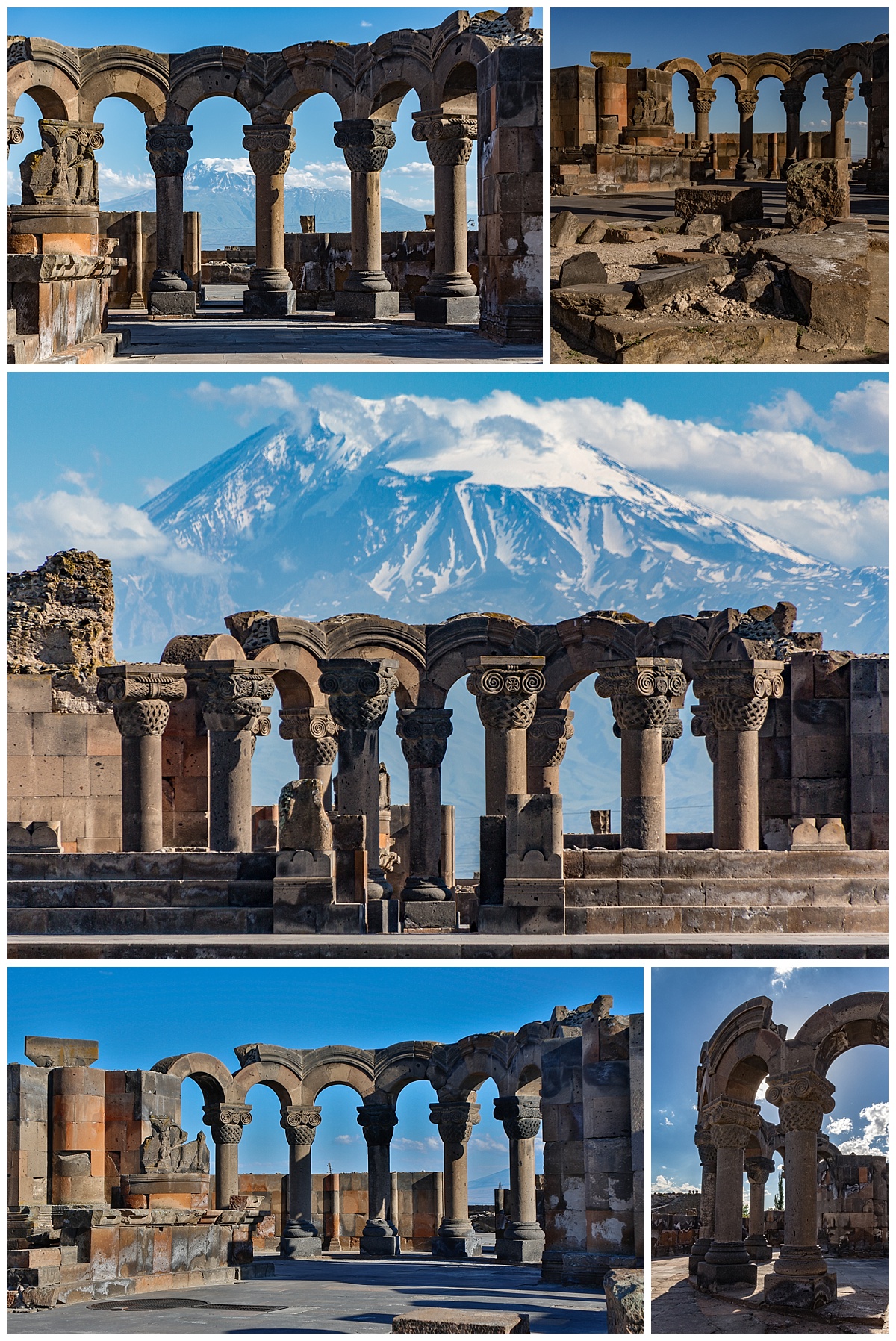
The last country of our photographic tour with Mehmet Özbalci is Armenia, where we started with three days in the capital city of Yerevan. It felt like luxury being able to stay in one (excellent!) hotel for 3 nights, and Yerevan proved to have plenty to keep our interest – and our cameras, happy.
One of our main targets was to photograph Mt. Ararat, the highest local mountain peak, where Noah is said to have landed his ark after the mythical flood. We visited the ruins of the Zvartnos temple, built in the 7th century, showing us an unusually clear view of the mountain top (above block).
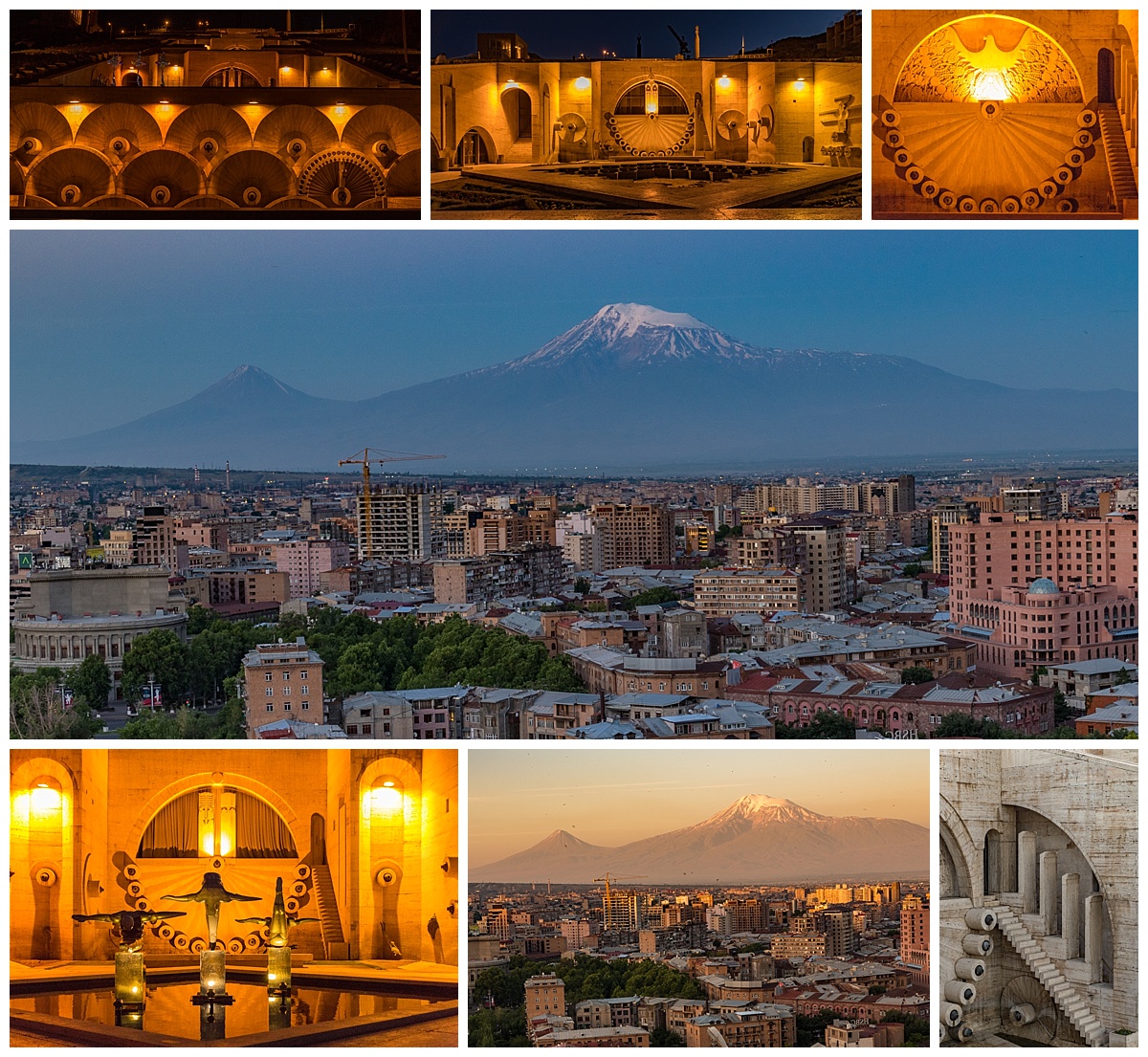
Mt. Ararat is special enough to warrant more than a single view, so we also climbed the 500 steps up Cascade, to see the mountain at sunrise. It was very unusual to see the mountain with no clouds around it this morning. Indeed, other than this morning, and the afternoon in the first block, every time we looked towards the mountain, it was hidden in clouds. Clearly Mehmet has the ears of the gods, and made sure we had perfect conditions for our photography! ☺
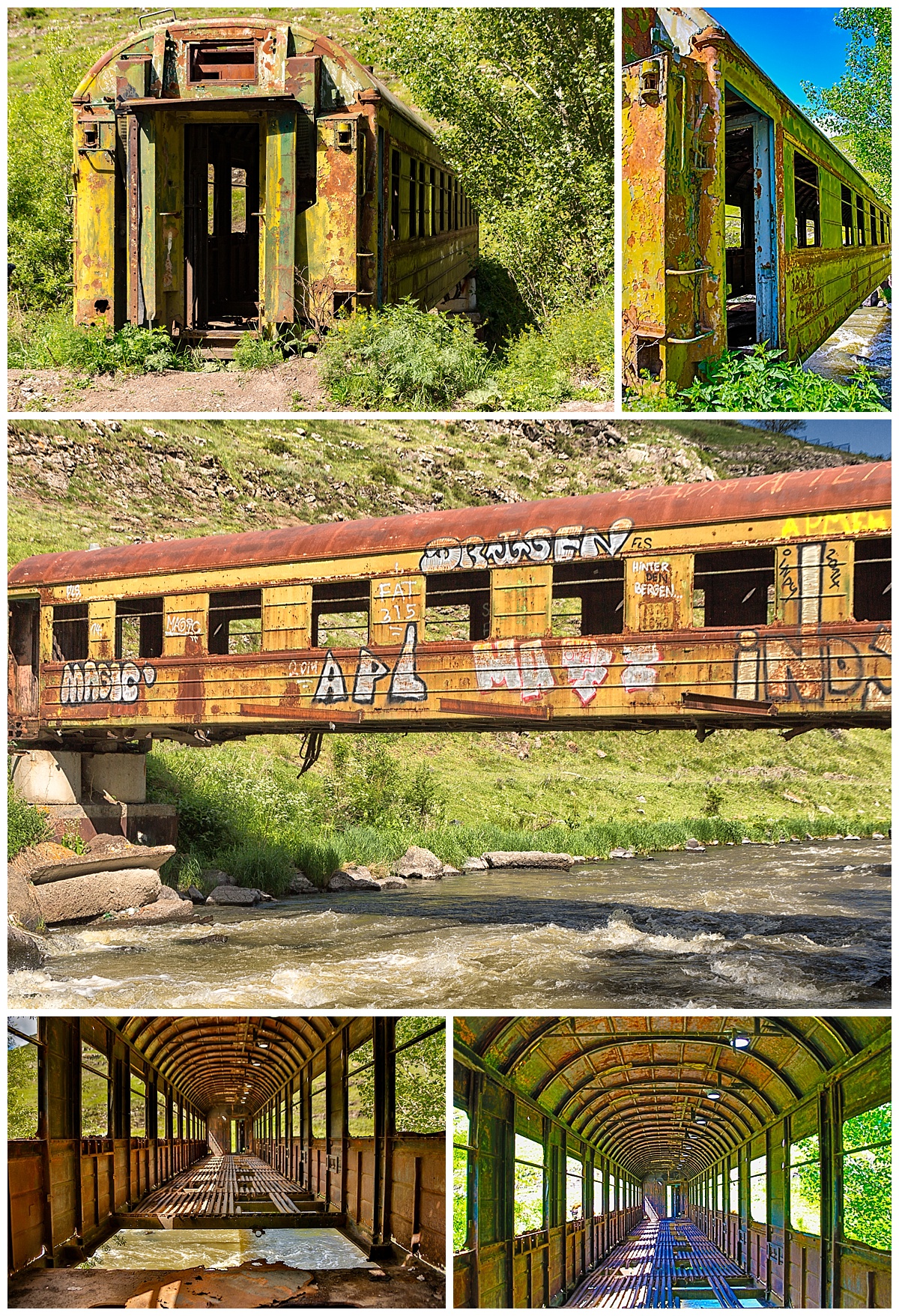
When driving in the countryside, we stopped at this old railroad car that has been repurposed into a bridge across this small river. As with many things in rural Armenia, it is in disrepair, which only adds to the photographic possibilities.
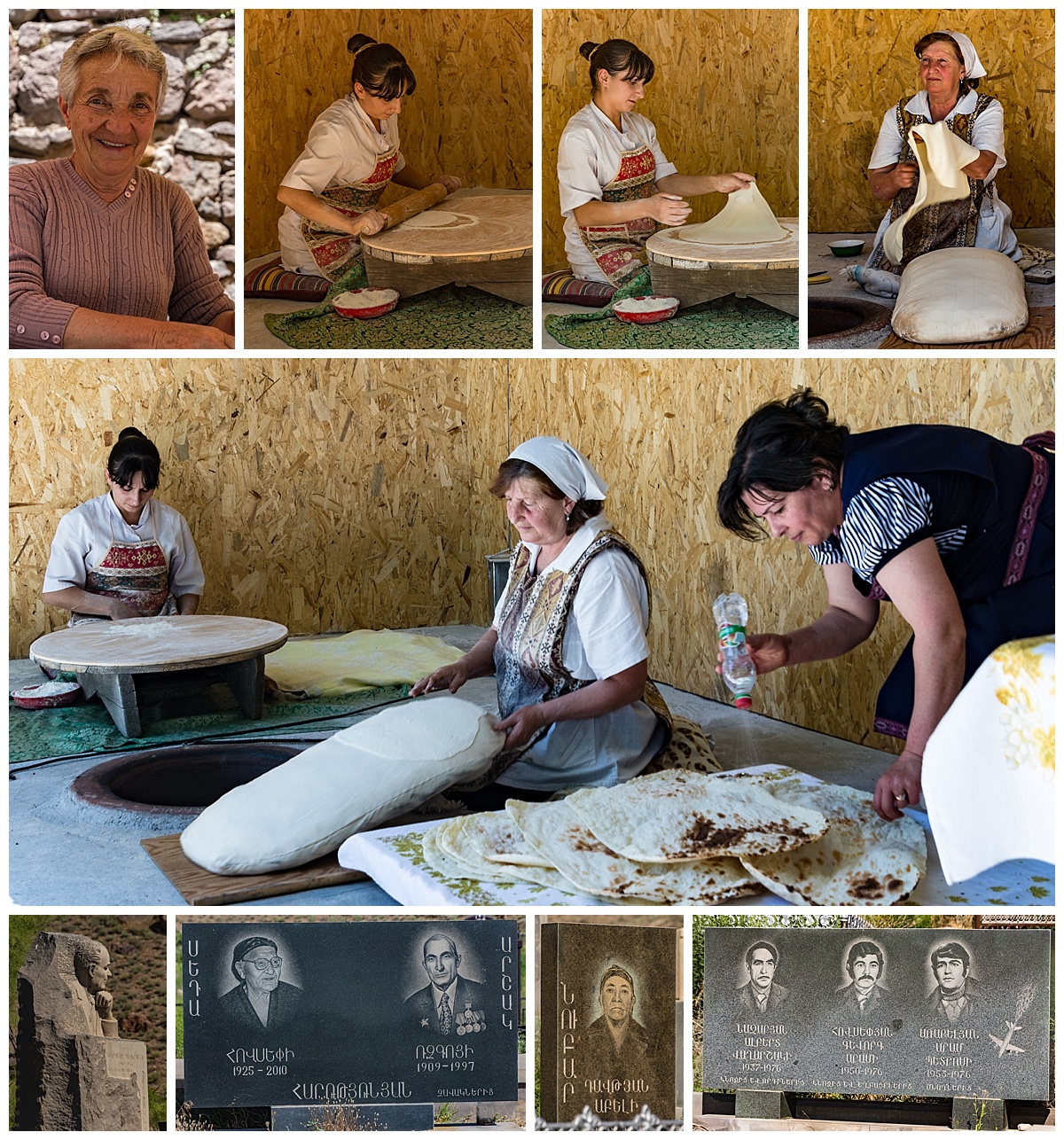
At one stop, we were able to see women making lavash bread (center and upper row). See the video at the bottom of this post to get a better feel for the work these women do all day long long, to produce the delicious bread we ate at each meal. The paper-thin bread is placed flat on what appears to be an ironing board, then slapped onto the side of the wood charcoal oven where it sticks, and is baked a couple minutes before being removed.
We also visited another cemetery. Each of these is unique in their own way, and all are different from what we are accustomed to in the West. The lower-right gravestone shows three unrelated men, all of whom died in the same year. Given that they are in the same gravesite, it is assumed they died together. Given the image of the flaming bomber on the right, it is assumed they died when shot down in a war incident. Since Armenia was not at war in 1976 when they died, it is surmised they died in some Soviet conflict elsewhere in the world. None of that was detailed on the tombstone though.
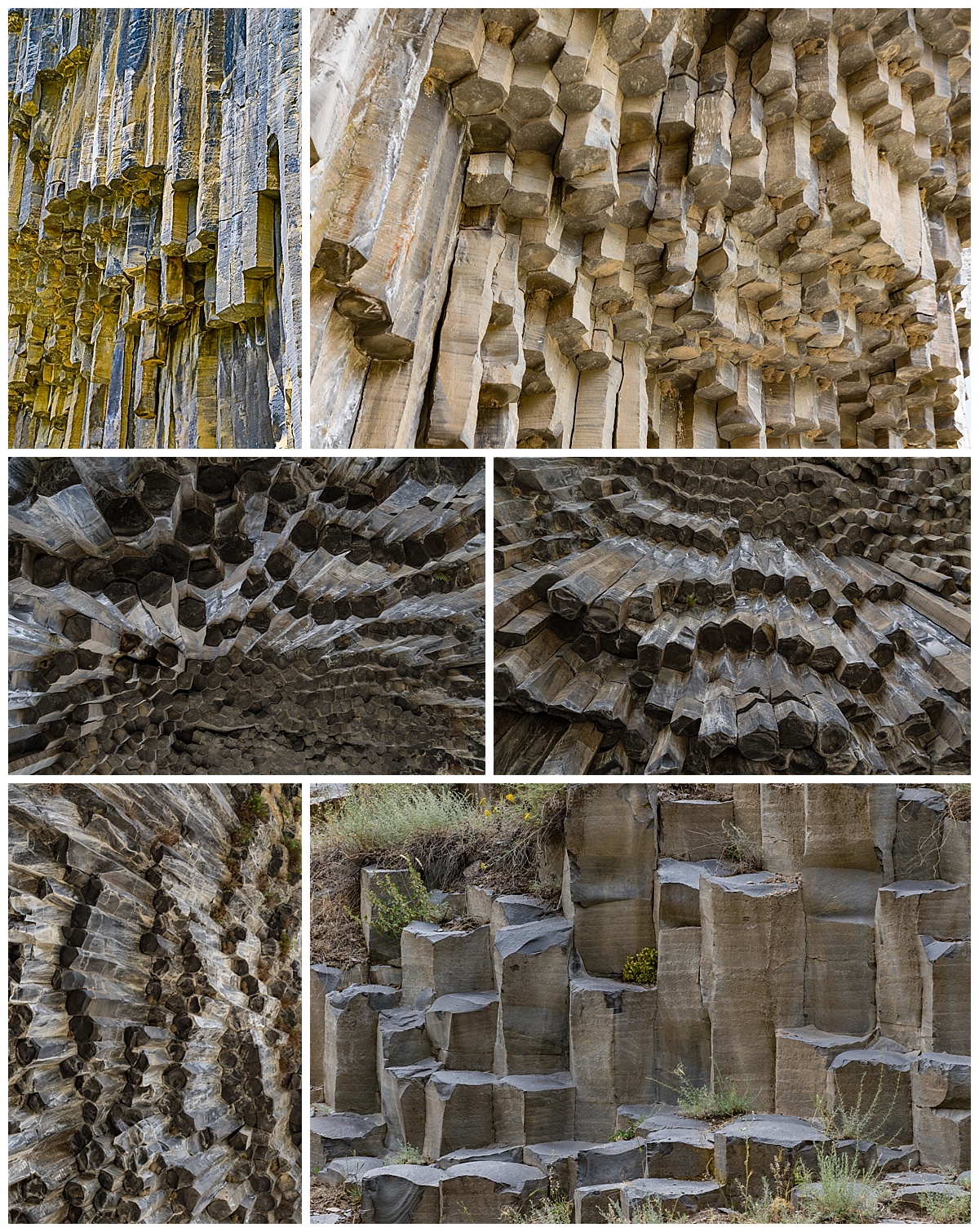
One canyon we passed was lined with basalt crystals, forming what the locals call the “symphony of stones.” Many of the hexagonal crystals lined up in a way reminiscent of drums of different depths and tones (or the pipes played by the Blue Man Group). Others line up looking like the keys on a piano.
Tomorrow, we will continue with the rest of our experiences in Yerevan.
Breadmaking in Armenia from Burt Johnson on Vimeo.